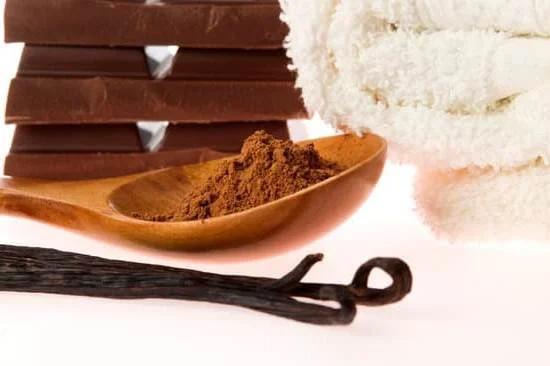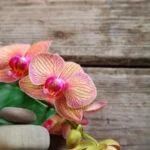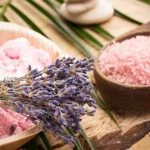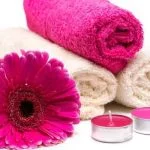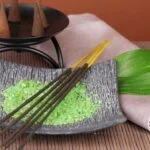Aromatherapy continues to gain popularity as a holistic approach to health and well-being. It involves the use of essential oils derived from plants to promote relaxation, improve mood, and alleviate various physical ailments. On the other hand, a humidifier is a device that adds moisture to the air in order to prevent dryness, especially during winter or in arid climates.
But can aromatherapy and a humidifier be used interchangeably? In this article, we will delve into the world of aromatherapy and humidifiers to explore their individual benefits and determine whether a humidifier can truly serve as an alternative to aromatherapy.
To begin with, let’s clarify what exactly aromatherapy entails. Aromatherapy is the practice of using essential oils extracted from plants to enhance overall well-being.
These oils are concentrated extracts derived from flowers, leaves, bark, or other parts of plants known for their therapeutic properties. When these essential oils are inhaled or applied topically, they stimulate receptors in our olfactory system and skin cells, triggering various physiological responses that promote relaxation, reduce stress levels, ease pain or discomfort, and improve overall mood.
On the other hand, a humidifier is primarily designed to increase the humidity levels in enclosed spaces by emitting water vapor into the air. This helps tackle problems related to dry air such as chapped lips, dry skin, irritated sinuses, and even respiratory issues like coughing or asthma symptoms.
Humidifiers come in different types – evaporative humidifiers use a fan to blow air across a wet wick while ultrasonic humidifiers use vibrations to create mist – but their main purpose is consistent: to add moisture back into the air we breathe.
In summary, both aromatherapy and humidifiers aim to enhance our well-being through different methods. While aromatherapy relies on essential oils’ therapeutic properties for its numerous benefits on mind and body health; humidifiers focus on increasing humidity levels to alleviate dry air-related issues. In the following sections, we will delve deeper into each practice, exploring their individual mechanisms and benefits, before determining whether a humidifier alone can truly replace dedicated aromatherapy practices.
Understanding aromatherapy
Aromatherapy is the practice of using essential oils to promote physical and psychological well-being. These essential oils are distilled from plants and have concentrated aromatic compounds that can provide various therapeutic effects when inhaled or applied topically. The science behind aromatherapy lies in the powerful influence these fragrances have on our olfactory system, which then triggers responses in our brain and body.
When we inhale the aroma of an essential oil, it stimulates the olfactory nerves in our nose. These nerves send signals to the limbic system, which is the part of our brain responsible for emotions, memories, and behavior. This direct connection between smell and emotions is why certain scents can evoke feelings of calmness, relaxation, or alertness. Aromatherapy has been shown to reduce stress, improve mood, enhance sleep quality, relieve headaches and pain, as well as boost concentration and focus.
There are several methods of practicing aromatherapy, with one popular option being diffusers. Diffusers are devices that disperse the essential oil molecules into the air so they can be easily inhaled. They work by either nebulizing (breaking down) the oils into a fine mist or by evaporating them using heat or ultrasonic vibrations. Diffusers are a convenient way to enjoy aromatherapy as they can cover larger areas and provide a continuous release of fragrance over an extended period.
Using a humidifier for aromatherapy offers additional benefits beyond just scent dispersion. Humidifiers work by adding moisture to the air, which can help alleviate dry skin and respiratory issues caused by low humidity levels. When combined with aromatherapy, a humidifier can enhance the therapeutic effects of essential oils by ensuring that they are effectively dispersed throughout a room while also providing added moisture to benefit overall well-being.
| Aromatherapy Benefits | Humidifier Benefits |
|---|---|
| -Reduces stress and anxiety | -Adds moisture to the air for skin hydration |
| -Promotes relaxation and better sleep | -Relieves respiratory issues caused by dry air |
The benefits of using a humidifier for aromatherapy
A humidifier can be a valuable tool in enhancing the benefits of aromatherapy. While aromatherapy itself offers numerous advantages for the mind and body, using a humidifier can further optimize these benefits by creating the ideal environment for essential oil diffusion.
One of the key benefits of using a humidifier for aromatherapy is its ability to improve skin hydration. Dry air can lead to dry and dehydrated skin, which can affect its overall health and appearance. By increasing the moisture in the air, a humidifier helps to combat dryness and keep the skin hydrated. This is especially beneficial when combined with certain essential oils known for their hydrating properties, such as lavender or rose.
In addition to skin hydration, a humidifier also has respiratory benefits when used in conjunction with aromatherapy. Dry air can cause irritation in the respiratory system, leading to issues such as coughing, sore throat, or congestion. A humidifier helps to maintain optimal humidity levels in the air, preventing these problems from occurring. When specific essential oils with respiratory benefits are added to the mix, such as eucalyptus or peppermint, they can provide additional relief and support for respiratory health.
These combined benefits of using a humidifier for aromatherapy make it an excellent choice for individuals looking to maximize their well-being. Whether you are seeking relaxation and stress relief or alleviating specific conditions like dry skin or respiratory issues, incorporating a humidifier into your aromatherapy routine can enhance the overall effectiveness of your practice.
| Benefit | Description |
|---|---|
| Skin Hydration | A humidifier increases moisture in the air, helping to hydrate and nourish the skin. |
| Respiratory Health | A humidifier maintains optimal humidity levels, preventing respiratory issues and providing relief. |
Differences between aromatherapy and using a humidifier
Aromatherapy and using a humidifier are two distinct practices that have their own unique benefits. While they can both contribute to creating a soothing and relaxing environment, it is important to understand the differences between the two.
Highlighting the Distinction
Firstly, it is crucial to highlight the distinction between aromatherapy and using a humidifier. Aromatherapy is a holistic practice that involves using essential oils extracted from plants to promote physical and emotional well-being. It focuses on utilizing the therapeutic properties of these oils through inhalation or topical application. On the other hand, a humidifier is a device that adds moisture to the air, increasing humidity levels in an indoor space.
One key difference between the two practices lies in their primary purposes. Aromatherapy aims to enhance overall health by targeting specific conditions or symptoms such as stress, sleep disorders, or respiratory issues. Aromatherapy treatments can involve inhalation through diffusers or steam baths or applying essential oils topically for massage or skincare purposes.
On the contrary, using a humidifier primarily serves to increase humidity levels in dry environments. This can be particularly beneficial during winter months when heating systems tend to cause low humidity levels indoors leading to skin dryness and respiratory discomfort.
Can a Humidifier be Considered Aromatherapy?
Some people may wonder if using a humidifier with essential oils can be considered a form of aromatherapy. While combining a humidifier with essential oils can create a pleasant aromatic environment, it does not fully encompass the principles and techniques of true aromatherapy.
Aromatherapy involves much more than simply filling the air with fragrance through humidification. Its foundation lies in understanding how different essential oils interact with our bodies on physiological and psychological levels.
Though inhaling essential oils dispersed by a humidifier can provide some benefits such as relief from congestion or improved sleep, it is important to note that the therapeutic effects may be diluted compared to the use of specific aromatherapy techniques and forms.
While a humidifier can create a comfortable environment and provide some benefits associated with aromatherapy, it should not be considered a complete substitute for dedicated aromatherapy practices.
Can a humidifier replace aromatherapy?
While a humidifier can enhance the benefits of aromatherapy, it cannot fully replace dedicated aromatherapy practices. Aromatherapy involves the use of essential oils to stimulate certain responses in the mind and body, while a humidifier primarily focuses on increasing the moisture levels in the air. Although they can complement each other, they serve different purposes and have distinct effects.
The limitations of using a humidifier alone
While a humidifier can create a more comfortable atmosphere by adding moisture to the air, it does not offer the full range of benefits that aromatherapy provides. Aromatherapy involves inhaling or applying essential oils, which contain concentrated plant extracts with specific therapeutic properties. These oils are absorbed through the respiratory system or skin, allowing them to have direct effects on physical and mental health.
A humidifier alone cannot provide these targeted benefits because it does not disperse essential oils into the air. While increased humidity levels may contribute to overall well-being by preventing dryness or soothing respiratory issues, it does not offer the same targeted effects as specific essential oil blends used in aromatherapy.
The role of a moisturizing agent
Although a humidifier cannot replace dedicated aromatherapy practices, it can act as a valuable tool for enhancing their effects. The increased moisture provided by a humidifier helps prevent dryness in the respiratory system and skin, making it easier for essential oils to be absorbed and utilized by the body.
When combined with aromatherapy practices such as inhaling essential oils or using them topically, a moisturized environment created by a humidifier can maximize the therapeutic benefits of these oils. By ensuring that both the air and body are adequately hydrated, users can experience improved absorption of essential oils and potentially enjoy enhanced relaxation and relief from various ailments.
The best practices for combining aromatherapy and a humidifier
Combining aromatherapy and a humidifier can create a synergistic effect, enhancing the benefits of both practices. However, there are some best practices to ensure that you get the most out of this combination.
Here are some tips and guidelines for effectively combining aromatherapy and a humidifier:
- Choose the right essential oils: Not all essential oils are suitable for use with a humidifier. Some oils may cause damage to the humidifier or leave behind residues. It’s important to choose essential oils that are labeled as safe for use in humidifiers. Additionally, consider your personal preferences and desired effects when selecting essential oils.
- Use high-quality essential oils: To fully enjoy the benefits of aromatherapy, it’s important to use high-quality essential oils. Look for pure, therapeutic-grade oils that have been properly tested and sourced from reputable suppliers.
- Clean your humidifier regularly: Regular maintenance is crucial when using a humidifier for aromatherapy. Clean the humidifier according to the manufacturer’s instructions to prevent mold growth and ensure optimal performance. This will help maintain the purity of the essential oils used.
- Find the right balance: When combining aromatherapy with a humidifier, it’s important to find the right balance in terms of concentration and diffusion time. Start with a low concentration of essential oil and gradually increase if desired. Pay attention to your body’s reactions and adjust accordingly.
- Consider personal preferences: Aromatherapy is highly individualized, so it’s important to consider your own preferences when using a humidifier for this purpose. Experiment with different scents and methods of diffusion (such as intermittent vs continuous) to find what works best for you.
By following these best practices, you can maximize the benefits of combining aromatherapy with a humidifier and create an optimal environment for relaxation, stress relief, improved sleep, and overall well-being.
Additionally, it’s worth mentioning the recommended essential oils that work well with a humidifier. Some popular choices include lavender for relaxation and better sleep, eucalyptus for respiratory support, citrus oils for a mood boost, and chamomile for stress relief. However, everyone’s preferences and needs are different, so feel free to explore other essential oils that resonate with you.
Is it worth investing in a specialized aromatherapy diffuser?
A specialized aromatherapy diffuser is a device specifically designed for dispersing essential oils into the air. While a humidifier can also disperse essential oils, investing in a specialized diffuser may have its advantages.
One of the main advantages of using a specialized aromatherapy diffuser is that it provides more efficient and controlled diffusion of essential oils. These diffusers are designed to break down essential oils into micro-particles, allowing them to be dispersed evenly throughout the room. This ensures that the aroma reaches every corner, creating a more effective aromatherapy experience.
Moreover, many specialized diffusers have different settings and timers, allowing you to customize your aromatherapy session. You can adjust the intensity of the scent and set specific durations for diffusion, making it easier to fit aromatherapy into your daily routine. Some diffusers even come with built-in LED lights that can create a soothing and relaxing ambiance.
Additionally, using a dedicated aromatherapy diffuser can help prolong the life of your essential oils. These diffusers often use ultrasonic technology or cold-air diffusion methods that do not heat up or alter the chemical composition of the oils. This means that the therapeutic properties of the oils remain intact, allowing you to fully benefit from their effects.
While investing in a specialized aromatherapy diffuser may offer added benefits, it is important to note that using a humidifier for aromatherapy can still be effective. If you already own a humidifier and are satisfied with its performance, there may not be an immediate need to purchase an additional device.
Ultimately, whether or not it is worth investing in a specialized aromatherapy diffuser depends on individual preferences and needs. It may be beneficial for those who are looking for more precise control over their aromatherapy sessions or want to enhance their overall experience with additional features such as LED lights. However, for those who are primarily interested in simple diffusion of essential oils into the air, a humidifier can still provide effective results.
Conclusion
In conclusion, the combination of aromatherapy and a humidifier can create a powerful synergy that enhances the benefits of both practices. Aromatherapy, with its use of essential oils and diffusers, has long been recognized for its positive effects on the mind and body. The science behind aromatherapy supports its ability to promote relaxation, reduce stress, improve mood, and even provide relief from certain physical ailments.
Adding a humidifier to the mix further amplifies the benefits of aromatherapy. A humidifier helps to maintain optimal moisture levels in the air, which is especially beneficial for individuals with dry skin or respiratory issues. By increasing humidity, a humidifier can enhance skin hydration and alleviate symptoms such as dryness, irritation, and congestion. When used in conjunction with aromatherapy, the humidifier helps to distribute the essential oils more effectively throughout the room.
It is important to note that while a humidifier can complement aromatherapy, it does not replace the dedicated practice itself. Aromatherapy involves not only inhaling essential oils but also incorporating them into massage oils, bath products, or skincare routines. However, using a humidifier that allows for essential oil diffusion can create a similar ambiance and therapeutic experience as using traditional methods like diffusers or steam inhalation.
Frequently Asked Questions
Is aromatherapy the same as humidifier?
No, aromatherapy is not the same as a humidifier. Aromatherapy refers to the practice of using essential oils to enhance physical and psychological well-being. It involves inhaling or using these oils topically for their therapeutic effects.
On the other hand, a humidifier is a device that increases moisture levels in the air, often used to alleviate dryness and increase humidity in indoor spaces. While some humidifiers can be used for aromatherapy by adding essential oils, not all humidifiers have this feature.
Do aromatherapy diffusers work as humidifiers?
While aromatherapy diffusers can have humidifying effects, they cannot fully replace the functionality of dedicated humidifiers. Aromatherapy diffusers primarily work by dispersing essential oil particles into the air for inhalation purposes, creating a pleasant scent throughout a space.
However, certain types of diffusers with ultrasonic technology can also release water vapor into the air, increasing moisture levels and acting somewhat similar to a humidifier. Nevertheless, their primary purpose remains aromatherapy rather than providing substantial humidity adjustments.
How can I add moisture without a humidifier?
There are several ways to add moisture to the air without using a traditional humidifier. One method is evaporative cooling, where you place bowls of water near heat sources such as radiators or heating vents so that evaporation occurs naturally, increasing humidity levels in the room. Another option is placing damp towels or sheets on drying racks or near fans; as the air passes through them, it picks up moisture and adds it into your living space.
Additionally, houseplants that require higher humidity levels can contribute to raising indoor moisture content through their natural transpiration process. Lastly, taking shorter showers with warm (not hot) water or leaving pots of water on stovetops during cooking can also introduce additional moisture into your home environment.

Are you looking for a natural way to improve your health and wellbeing?
If so, aromatherapy may be the answer for you.

